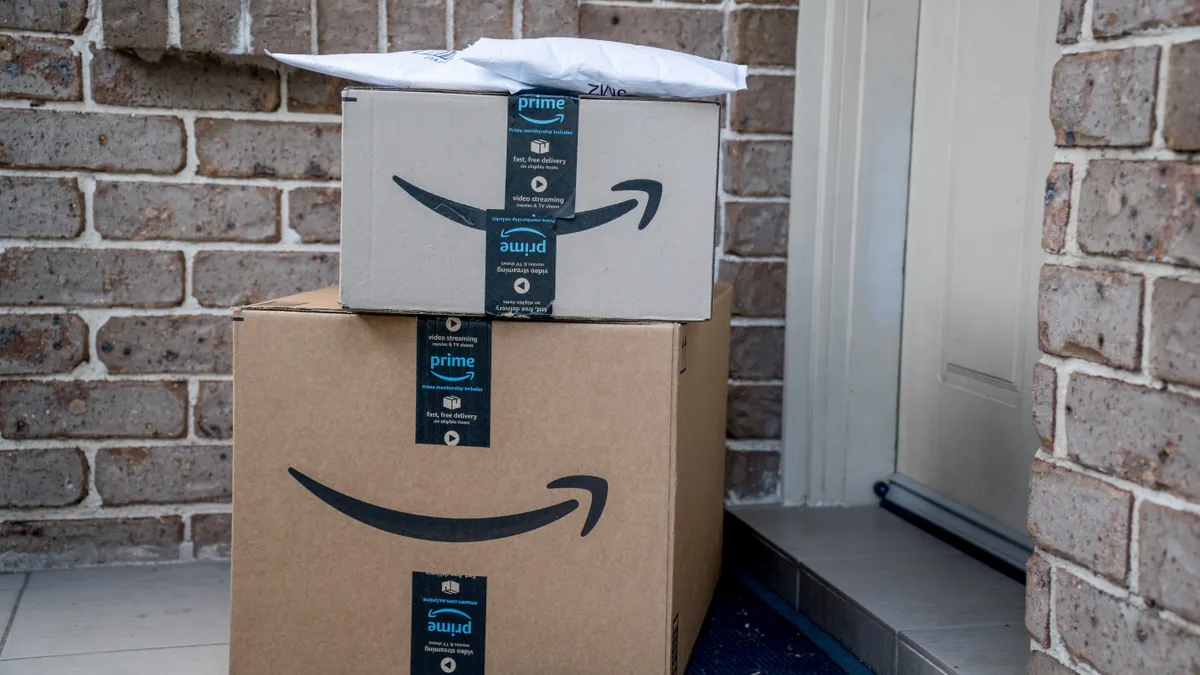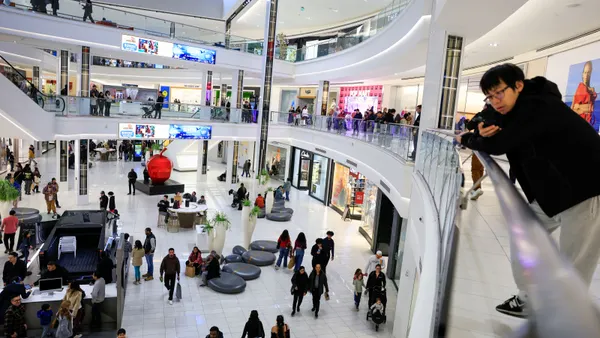Dive Brief:
-
Spurred in part by its summertime Prime Day sale, Amazon on Thursday reported that Q3 online store sales rose 7.2% year over year to $61.4 billion and physical-store sales rose 5.4% to $5.2 billion.
-
Growth of services in the e-commerce giant’s retail business was especially solid. Product sales grew 7% to $67.6 billion, while third-party seller services rose 10.3% to $37.9 billion, advertising grew 18.8% to $14.3 billion and subscriptions grew 10.9% to $11.3 billion.
-
The giant AWS cloud services business, which underpins Amazon’s profitability, helped drive net income growth of more than 55% to $15.3 billion, per a company press release.
Dive Insight:
Several analysts took note of the robust operating margins in Amazon’s Q3 report. At Amazon’s cloud unit, which is benefiting from AI and all its potential, operating margin topped 38%. But, while AWS and its international segment posted all-time highs in that metric, there were strong operating margins across the company’s business segments in the third quarter, according to research from William Blair analysts led by Dylan Carden.
Operating margins were also given a boost by Amazon’s layoffs in recent years. Though most cuts were made about a year ago, workforce reductions continued into this year, including at AWS and in customer service, warehouse operations and Buy with Prime. Based on their job postings monitor, UBS analysts deem the margin upside from a leaner headcount “durable,” according to a Friday client note.
There were also other strengths in retail. For example, the 7% product-sales expansion was the best growth in six months, boosted by summer’s Prime Day, according to emailed comments from GlobalData Managing Director Neil Saunders.
“This is always a big event for Amazon but, despite even tougher competition from other retailers jumping aboard the discount bandwagon, Amazon remained the focal point and pulled in more shoppers than ever,” he said. “Some of this is down to consumers being more receptive to discounts, but some is also because Amazon has fine-tuned the deals it offers to ensure they are relevant and compelling. This aids conversion.”
The company’s Prime membership “remains a core contributor to this growth,” Chief Financial Officer Brian Olsavsky told analysts Thursday, noting that Prime Day boosted paid membership growth, which accelerated in the U.S. and abroad in Q3.
While AI is critical to the progress at AWS, Amazon also touted AI-powered initiatives in retail, including shopping tool Rufus, which rolled out to U.S. customers earlier this year and is becoming available in Canada, France, Germany, India, Italy, Spain and the U.K.; shopping guides that simplify product search; Project Amelia, an AI assistant for sellers; and video generation and live image capabilities for advertisers.
Perhaps even more important to Amazon’s retail operation is its refinements in fulfillment and delivery, increasingly aided by robotics. Improved inventory placement in Q3 helped drive down costs in the company’s fulfillment network, which led to “better productivity in our transportation network and shipping efficiency from higher units per box,” Olsavsky said.
“The reason why we're trying to have more robotics and automation in our fulfillment network is it allows us ... to ship more quickly, to ship more cost effectively, and to make conditions even safer for our fulfillment teammates than what they already have today,” he said, noting that in a new Shreveport, Louisiana, facility the company now has “very significant new robotics capabilities in the areas of stowing, picking, packing, and shipping that we are finally put into one facility to get the entire workflow.”
In retail, Amazon is also benefiting somewhat from “some of the slip-ups of other retailers in more essential categories, such as locking up products or deteriorating the store experience,” according to Saunders. Customer service, curation and other aspects of a good store experience are crucial to insulating retailers from the stiff competition from Amazon, experts say. That’s true not just of specialty retail but also everyday goods, Saunders said.
“While it is only happening at the margins, these things are pushing more people to shop for everyday products on Amazon — with many of these new converts becoming regular and loyal customers in essentials categories,” he said.















